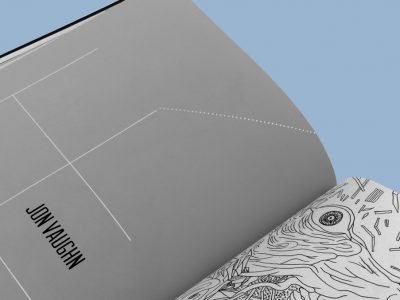Anders Nilsen is a notable American graphic novelist whose works include Big Questions, Dogs and Water, Don’t Go Where I Can’t Follow, Rage of Poseidon, The End, and others. In Poetry is Useless, his latest book, Nilsen redefines the sketchbook format, intermingling elegant, densely detailed renderings of mythical animals, short comics drawn in ink, meditations on religion, and abstract shapes and patterns. This expansive ‘sketchbook-as-graphic-novel’ reveals seven years of Nilsen’s life and musings: it covers
Los Angeles artist Richard Kraft’s Here Comes Kitty: A Comic Opera is a wildly irreverent collage narrative that challenges at every turn. To create his dreamlike paper opera, Kraft worked directly over an issue of Kapitan Kloss — a Cold War comic about a Polish spy infiltrating the Nazis — superimposing a cast of strange new voices and characters on top of it. “A riot of images and words”, the resulting project is arbitrary, inventive and
Taking a Line for a Walk — 2: Matt Davey Taking a Line for a Walk: Matt Daveyappeared in CAROUSEL 37 (2016) — buy it here
Taking a Line for a Walk — 1: Jon Vaughn Taking a Line for a Walk: Jon Vaughnappeared in CAROUSEL 37 (2016) — buy it here
MALLORY TATER The Last Nickel Geraldine’s black bather sticks to her chapped skin. Her thighs burn rogue with saltwater rashes. The water isn’t good to her but she loves it anyway. She walks her path to the seawall, one-at-a-times each stone step down to the shore. She feels a shifting in the land, but she isn’t afraid of it. Kelp and purple claw-weed accumulate in bundles, thick and dirty like doll’s hair. Geraldine wades until
Filmmaker Justin Stephenson took fifteen years to carefully create The Complete Works — a labour of love that creatively adapts the work of internationally acclaimed avant-garde poet bpNichol. From comic book detective stories & westerns to documentaries & magic realism, and from hand-drawn animation to computer-generated images, The Complete Works wrestles Nichol’s writing off the page and projects it onto the screen. It uses bpNichol’s poetic methods on Nichol himself to create a film that




